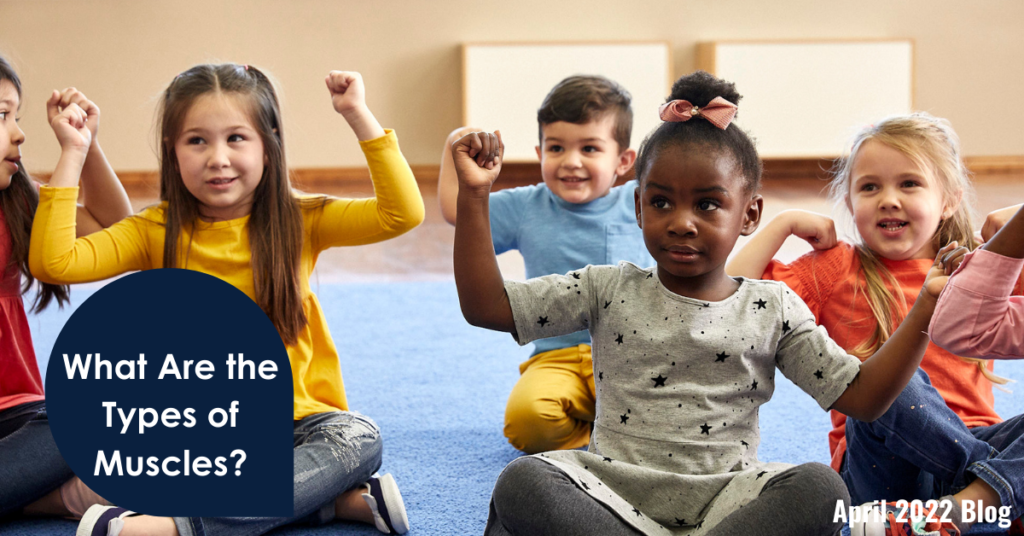
The body is full of muscles that continue to grow and get stronger as kids grow every year. They work better the more they are used. At Stretch-n-Grow, we love to focus on different muscle groups, working out our arms and legs to help them do their best. But did you know there are different kinds of muscles in the body? These muscles all do different things. Teaching kids the importance of these muscles can help them understand the importance of taking care of their bodies through exercise and a healthy diet.
So what are these different kinds of muscles?
- Smooth Muscles: You have smooth muscles all over your body. They usually make up part of our organs, like in our stomachs to keep food moving through the digestive tract. They are also in our eyes, helping them to focus. Eating nutritious meals keeps these muscles working well.
- Cardiac Muscles: The cardiac muscles are your heart muscles. These muscles work all by themselves, without you thinking about it! They contract to pump blood through the body. Eating good fats and fiber help keep your heart healthy. Exercise that elevates the heart rate just a little, not a lot, makes it easier for the heart to function, keeping it strong.
- Skeletal Muscles: These make up most of the body! They are the muscles that help you lift things, move, shake, stretch, and dance. Working out in safe ways by lifting weights, stretching, and running keeps muscles strong and working well.
We love working out our muscles! Some of our skeletal muscles have funny names. Here are some of our favorites:
- Quadriceps: These muscles are in the front of your thighs. They help you run and jump.
- Rectus abdominus: These muscles in the front core, around your stomach. They help you bend and twist.
- Triceps: These muscles are in the back of your arm. They help you pick things up, and can help you move things behind you.
- Gluteus maximus: These are the muscles you sit on!
- Trapezius: These muscles are in your upper back, and help you lift your shoulders.
What are your favorite muscles? And what do they do?
By: Bethany Verrett
